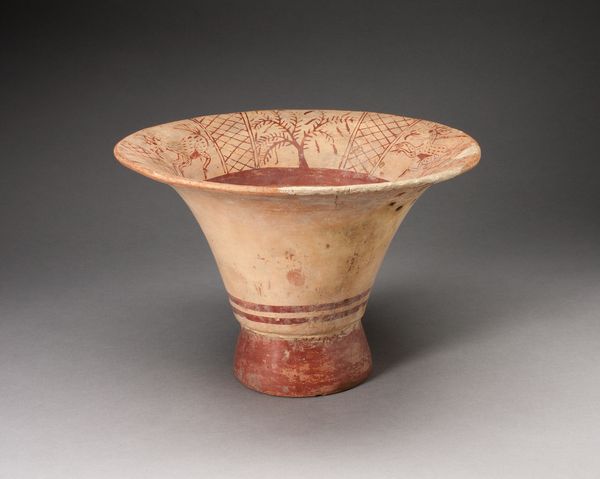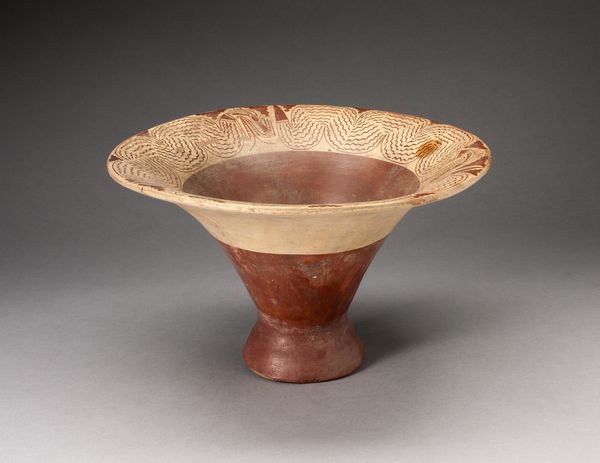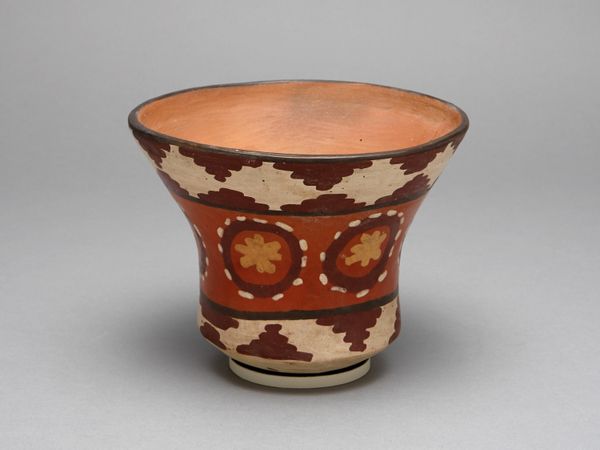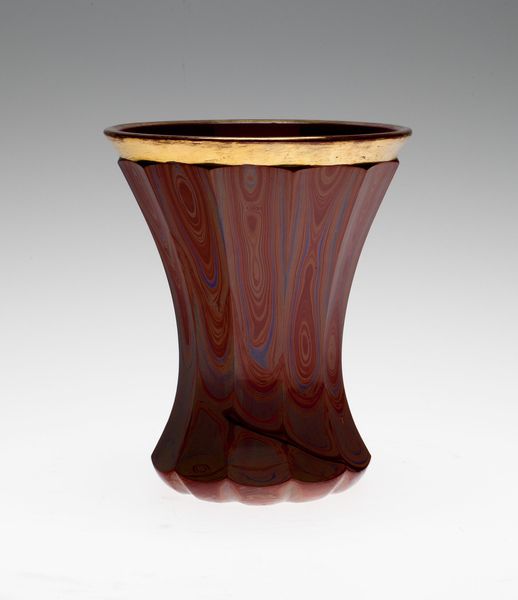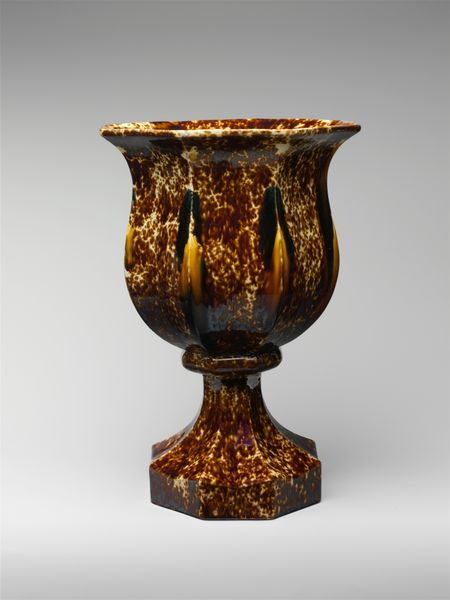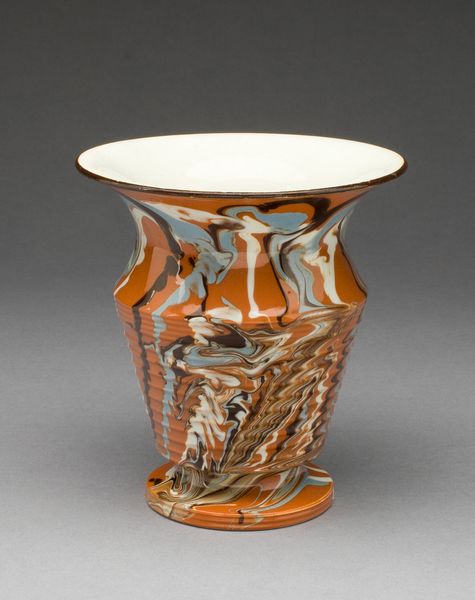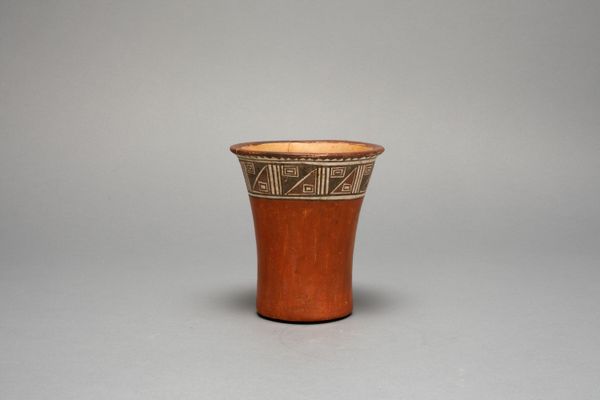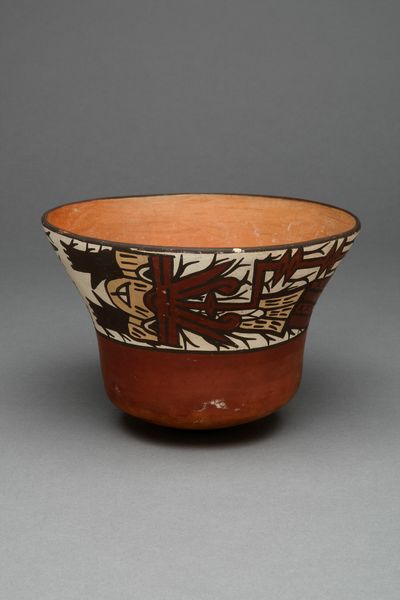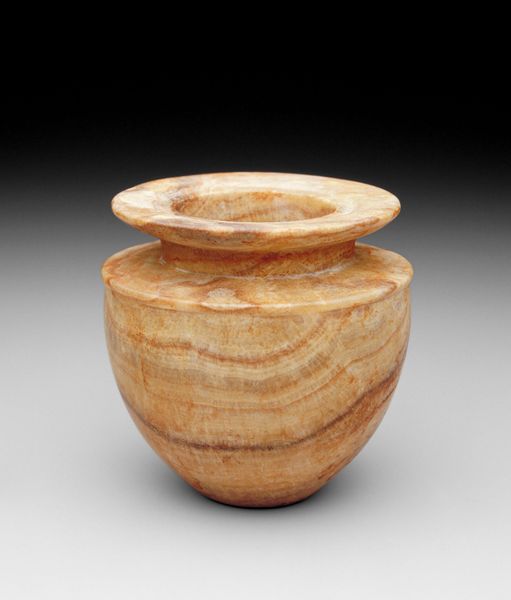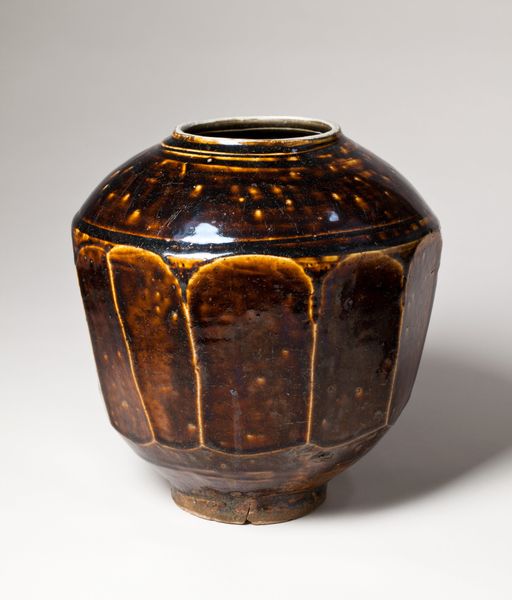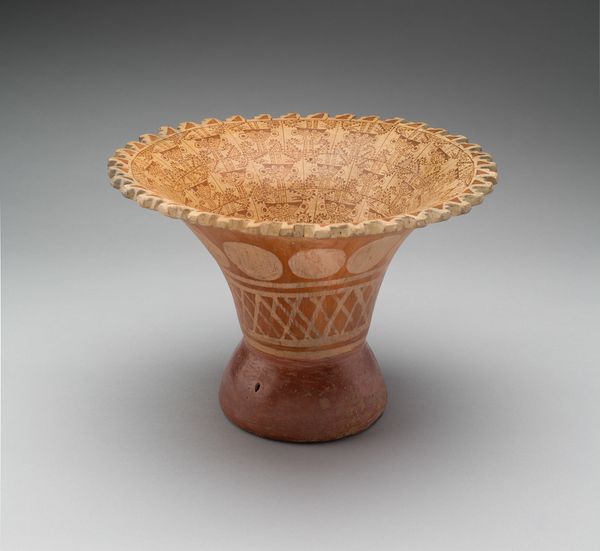
ceramic
#
ceramic
#
decorative-art
Dimensions: 12.4 × 12.4 cm (4 7/8 × 4 7/8 in.)
Copyright: Public Domain
Curator: Here we have a ceramic piece entitled "Flower Pot with Stand," believed to have been crafted sometime between 1890 and 1900. It resides here at the Art Institute of Chicago. Editor: The scale feels unexpectedly intimate. Despite its functional design, I am immediately drawn to the color gradients— the interplay of earthy browns with these almost cascading greens gives it an aura of wildness tamed. Curator: That's quite perceptive. The glazing technique, while appearing somewhat rudimentary to our modern eyes, carries the echoes of pre-industrial artistic intention—a certain humbleness intertwined with an earnest attempt at artistry. One could say the greens recall idealized notions of the landscape—a symbol for nature itself held within the domestic sphere. Editor: Indeed, observe how the vertical streaks of green visually extend and, in doing so, amplify the vessel's overall height. Furthermore, that decorative ridging around the pot's rim and base lends texture and subtly articulates the boundaries between different structural elements. A conscious, almost graphic definition emerges from these details. Curator: The lack of identifiable maker indeed turns our focus to its anonymous representation of late 19th-century aspirations toward beauty amidst everyday life. This form embodies domestic ritual – the simple, consistent need to nurture, expressed through decorative impulse. The brown, grounding stand perhaps roots this sentiment in earth itself. Editor: True. Note how its unpretentious simplicity creates this satisfying tension with those expressive, almost painterly glaze effects. There’s an inherent visual dynamism contrasting that earthy foundation— a captivating balance. Curator: Ultimately, what is revealed through this pot and stand, therefore, is how an anonymous maker helped shape cultural ideals towards a love for simplicity combined with unpretentious expression of self, reflecting human relationships with the natural world. Editor: Precisely. Analyzing it through its basic structural elements opens up into its larger social contexts. A quietly profound interplay.
Comments
No comments
Be the first to comment and join the conversation on the ultimate creative platform.
